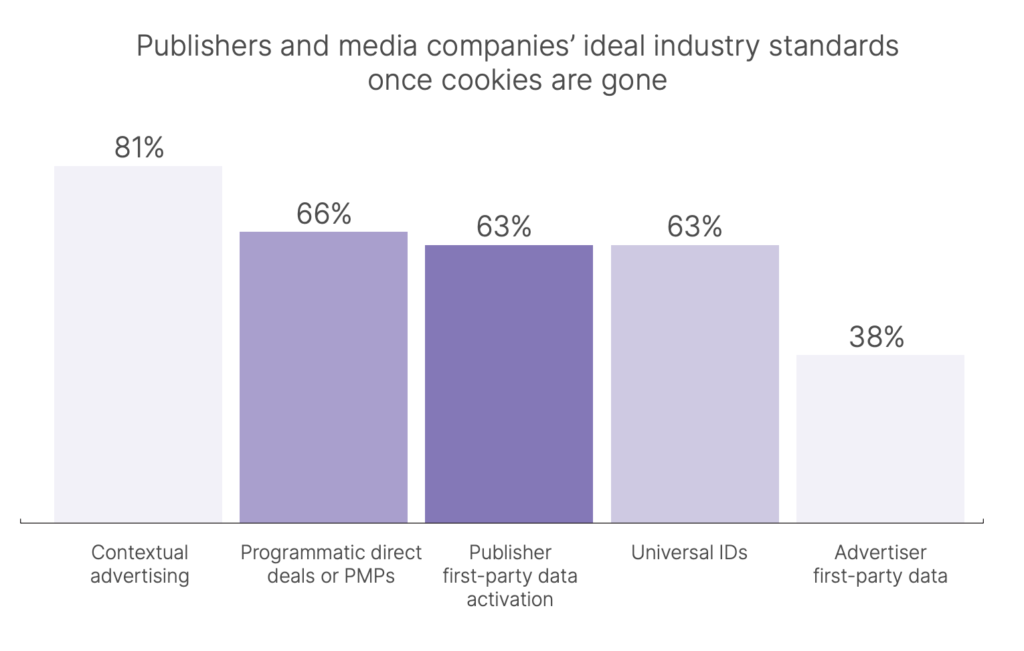What is Addressability in Digital Advertising?
Recently, addressability has emerged as a significant advancement in digital advertising. It enables advertisers to target specific audiences more precisely, thereby enhancing the effectiveness of ad campaigns. But what exactly is addressability, and why is it important? This article will provide a comprehensive overview of addressability in digital advertising.
What is Addressability?
Addressability in digital advertising is the way advertisers and publishers connect to consumers across digital channels and devices based on their unique characteristics, behaviors, and preferences.
Advertisers can create personalized ads by collecting accurate data and segmenting audiences. The key difference between traditional advertising and addressable advertising is that the latter focuses on a more tailored approach that aligns marketing efforts with consumer needs.
Benefits of Addressability
As previously mentioned, addressability is a powerful tool for brands looking to enhance the effectiveness of their marketing campaigns. It offers several key benefits:
- Enhanced Targeting: Addressability enables advertisers to reach the right audience at the right time with the right message, improving ad relevance and engagement. Consumers are more likely to see ads that interest them, leading to a better overall experience.
This capability is crucial as publishers and media companies face challenges in monetizing audiences they can’t target effectively. According to a study by Verve and AdExchanger on CPM trends, 44% of publishers and media companies report difficulties in monetizing these audiences, underscoring the need for improved targeting solutions. - Improved ROI: By targeting ads more effectively, advertisers can reduce wasted ad spend and achieve better returns. This optimization boosts the efficiency of marketing budgets, enhances profitability, and provides a stronger competitive edge.
- Better Measurement: Addressable advertising offers improved measurement and tracking for campaigns, allowing advertisers to understand how well their ads are performing. This facilitates real-time adjustments to better reach target audiences.
Challenges of Addressability
While addressable advertising offers many benefits, it also faces challenges, including data management, privacy concerns, and the phase-out of third-party cookies. These issues make it difficult for many advertisers to fully leverage addressability. Businesses often turn to expert project management consulting services to navigate these complexities, as these experts provide insights and strategies to handle data management, privacy issues, and emerging technologies effectively.
A study by the IAB highlights that data privacy regulations are a significant obstacle in implementing addressable advertising. Another report by Forrester reveals that 38% of marketers struggle with poor data quality, impacting their ability to target consumers effectively and integrate data from various sources to create a unified view of their audience.
Components of Addressable Advertising
To overcome these challenges and maximize the effectiveness of addressable advertising, it is crucial to understand its core components: data collection, audience segmentation, and ad delivery.
Data Collection
Data collection is the foundation of addressable advertising. It involves gathering information on consumer behavior, preferences, and demographics to create detailed profiles of individuals or households. This data can be sourced from:
- First-Party Data: Information collected directly from consumers, such as website interactions, purchase history, and CRM data.
- Second-Party Data: Data shared between partners, often through alliances or partnerships.
- Third-Party Data: Information obtained from external sources, such as data brokers and aggregators.
Audience Segmentation
Audience segmentation involves dividing a broad audience into smaller, more specific groups based on various criteria. Techniques for audience segmentation include:
- Demographic Segmentation: Based on factors like age, gender, income, and education.
- Behavioral Segmentation: Based on past behaviors, such as purchase history and website interactions.
- Psychographic Segmentation: Based on lifestyle, interests, values, and attitudes.
Examples of segmentation criteria include targeting high-income individuals aged 35-55 in New York, NY, for luxury car brands or young professionals interested in the latest gadgets in San Francisco, CA, for tech companies.
Ad Delivery
Ad delivery is the process of distributing addressable ads to the targeted audience. Platforms that support addressable advertising include:
- Programmatic Advertising Platforms: Automated systems that use data and algorithms to deliver targeted ads in real-time.
- Social Media Platforms: Channels like Facebook, Instagram, and LinkedIn offer advanced targeting options based on user data.
- Connected TV (CTV) and Over-the-Top (OTT) Platforms: These platforms deliver ads based on viewers’ habits and preferences.
Methods for delivering addressable ads include:
- Dynamic Creative Optimization (DCO): Technology that automatically customizes ads based on real-time data about the viewer.
- Sequential Messaging: A strategy that delivers a series of ads to guide the consumer through the buyer’s journey.
Building an Addressable Audience with First-Party Data
Addressability is the capability to identify digital audiences for effective targeting and measurement. As consumers continue to prefer personalized experiences, establishing a strong first-party data foundation is essential.
Steps to Start Building Your First-Party Data Dataset:
- User Authentication: Encourage users to authenticate by collecting emails and logins through gated content or services.
- Newsletter Program: Drive email collection by offering premium content in exchange for newsletter sign-ups.
Once you’ve gathered this data, the next step is activating your addressable audience. Consider using scalable identifiers like UID 2.0 or partnering with a vendor offering identity resolution and ID-linking capabilities. This approach will enable more targeted, addressable advertising.
The State of Signal Loss in Digital Advertising
Signal loss refers to the reduction of digital data that advertisers use to track user actions and preferences. This data is vital for creating personalized ads and measuring marketing success. Signal loss can occur due to several factors:
- Privacy Regulations: New laws like GDPR and CCPA restrict how user data can be collected and used, leading to a decrease in available data.
- Browser Privacy Features: Browsers like Safari and Firefox have introduced features that block third-party cookies, reducing the amount of tracking data available.
- Ad Blockers: Many users employ ad blockers or privacy-focused browser extensions that prevent data collection and tracking.
- Platform Changes: Changes in how major platforms like Google and Facebook handle user data can affect signal availability. For instance, Apple’s App Tracking Transparency (ATT) framework requires apps to obtain user consent before tracking activities.
Impact of Signal Loss
Signal loss can lead to less relevant ads, resulting in lower engagement and higher advertising costs. It also makes it harder to allocate resources and optimize campaigns. Advertisers must adapt by focusing on first-party data and new technologies to manage these changes. Signal loss impacts both advertisers and publishers by reducing their ability to target specific audiences with precision and accurately measure ad performance.
The Role of Third-Party Cookies
Deprecation of Third-Party Cookies
Third-party cookies have been essential for tracking online behavior and delivering targeted ads, a cornerstone of addressable advertising. These cookies collect data from various sites, helping build detailed user profiles for more accurate ad targeting. However, the phase-out of third-party cookies marks a significant shift in digital advertising.
For example, in 2020, Google announced plans to phase out third-party cookies in Chrome by 2023, later extended to 2024. However, on July 22, 2024, Google announced that instead of phasing out third-party cookies, it will replace them with privacy-protective APIs through its Privacy Sandbox initiative.
Impact on Addressability
The decline of third-party cookies poses challenges for maintaining effective targeted advertising strategies. As browsers and privacy laws increasingly restrict their use, advertisers must explore new methods and technologies that uphold user privacy while delivering relevant ads.
Alternatives to Third-Party Cookies
The deprecation of third-party cookies has spurred innovation, leading to the development of alternatives such as first-party data, contextual advertising, unified ID systems, and the Privacy Sandbox. These alternatives aim to balance effective advertising with user privacy:
- First-Party Data: Involves collecting and utilizing data directly from consumers. Strategies include enhancing customer relationships and investing in Data Management Platforms (DMPs).
- Contextual Advertising: Places ads based on the content of a webpage, not user behavior. This method aligns with privacy regulations and increases relevance.
- Unified ID Solutions: Systems designed to replace third-party cookies, using a single identifier to recognize users across sites. Examples include Unified ID 2.0 and LiveRamp’s IdentityLink.
- Privacy Sandbox: A Google project aimed at improving online privacy while enabling advertisers to reach audiences. Features include Federated Learning of Cohorts (FLoC) and the Topics API.

Source: AdExchanger
Conclusion
Addressability has revolutionized digital advertising by enabling precise targeting and personalized ad experiences. While it enhances targeting, ROI, and measurement, it also faces challenges such as data privacy concerns and the decline of third-party cookies. Understanding the key components—data collection, audience segmentation, and ad delivery—can help maximize the benefits of addressability. Innovations like first-party data and new privacy technologies offer promising solutions, and adapting to these changes while prioritizing user privacy is crucial for future success in digital advertising.


